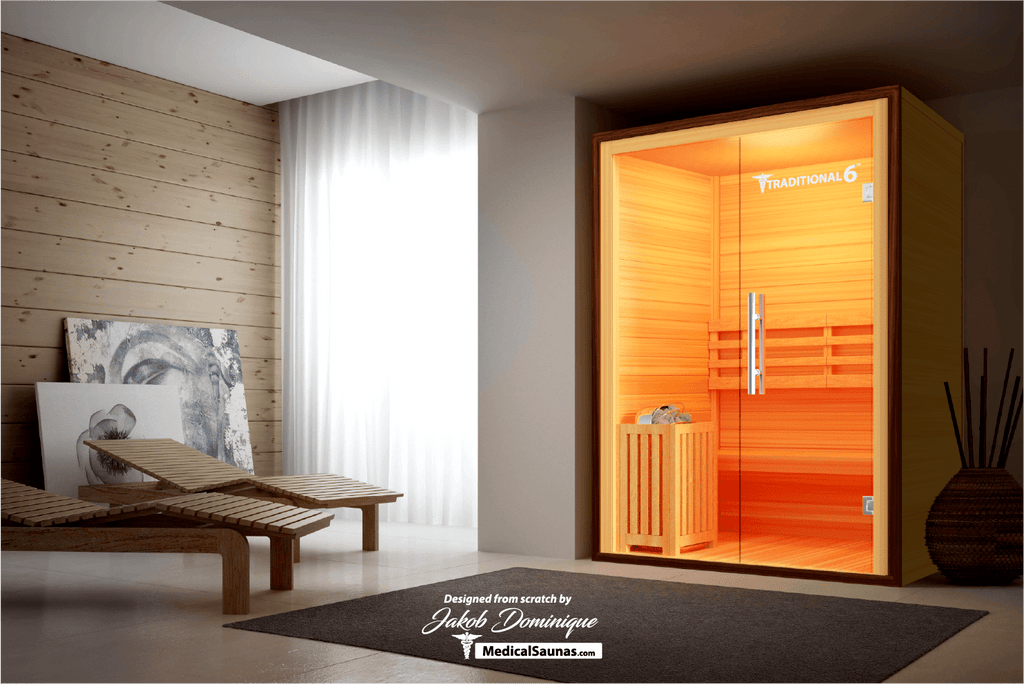9 Easy Facts About Traditional Sauna Explained
9 Easy Facts About Traditional Sauna Explained
Blog Article
About Traditional Sauna
Table of ContentsOur Traditional Sauna PDFs5 Simple Techniques For Traditional SaunaThe Best Strategy To Use For Traditional SaunaTraditional Sauna for BeginnersThe Of Traditional Sauna
A lot of the weight shed in a sauna is water loss and is re-gained upon rehydrating. Nevertheless, undeniably sauna can be a fundamental part of a healthy weight reduction program. To consider the distinctions in between traditional and IR saunas, I will certainly divide these into proven, academic, and made differences.Thus, the most popular point in the saunawhich goes to the ceiling straight above the sauna heateris typically in between 185 and 190 F. Claims that a typical sauna goes beyond 200 F is just not real and not suitable for electric saunas offered in the United States. The temperature level for a far-infrared sauna is usually established in between 120 and 140 F; however, unlike the typical sauna, the objective in and IR area is not to achieve a high temperature level.
Because of this, the temperature distinction is nearly unnecessary, considering that profuse sweating leads to both sauna types, yet the technique of warming the body is various. In an IR sauna the bather will certainly feel hot and will certainly sweat profusely, but at a lot lower temperature levels. Traditional Sauna. Therefore, if the goal is to spend longer time periods in the sauna, the IR sauna is a good choice

The Single Strategy To Use For Traditional Sauna

When the high temperature level is attained, the components cycle on and off to keep the heat. Traditional Sauna. Many traditional sauna individuals delight in putting water over the rocks to develop steam to increase sauna humidity levels. The benefits of putting water over the rocks include: making the room more comfortable, moistening the nasal passages, and allowing the use of aromatherapy by blending important oils with the water
In a far-infrared sauna, the warmth waves penetrate the body to efficiently heat up the body and raise the body core temperature. To achieve this enhanced temperature level, Far-infrared emitters produce infrared energy which is close to the exact same wavelength as that which the body naturally emitsoften referred to as the "Important Variety" of 7 to 14 microns), so the power is well obtained by the body.
When the power enters the body, it creates the body temperature to increase and eventually results in sweat. In an infrared sauna it is essential for the emitters/heaters to stay on almost continuously. Since there is no mass of rocks to preserve heat, the sauna will certainly cool down if the emitters shut down.
4 Easy Facts About Traditional Sauna Explained
As pointed out over, the sauna bather in an infrared room intends to place himself in front of running emitters to get maximum advantage from the warm. The home heating time for both spaces can be extremely different, relying on just how the spaces are used. For a typical sauna, a bather needs to allow 30-40 minutes for the room to attain a preferred temperature level and to properly pre-heat the rocks.
A well constructed sauna will normally accomplish a temperature of 150-160 F in about 30-40 mins. For hotter temperature levels, the room might need to warm for a longer period.

Traditional saunas have a tendency to be bigger (therefore use more electrical power) than infrared saunas, although standard saunas are definitely offered in one and 2 individual sizes. For a two-person conventional sauna, 5x6 or 5x7 size is most popular. The top bench can easily seat 2 or three people and is likewise long sufficient to relax throughout the sauna session.
The Ultimate Guide To Traditional Sauna
The ordinary price per kWH of power in the U.S. is around $0.11 - Traditional Sauna, so a 4.5 kW heating unit will set you back roughly $.50 to compete one hour, if the heating system runs continually for one hour. Generally a sauna heater will certainly run for 75% of the first hour and 50% of subsequent hours on considering that the elements cycle once the set temperature is accomplished
A two individual far-infrared room is normally physically smaller than a standard sauna, typically regarding 4' x 4' or smaller. The IR heater is generally 1.5-1.7 kW utilizing a 120 volt 15 amp plug-in service. Given that the space can be utilized quicker than a sauna area, we will presume the area is utilized for to of an hour including warm up time.
Finally, there is a click to find out more seldom discussed distinction in the their website social experience in between both rooms. While our culture has actually shed a few of the social benefit of the conventional sauna experience, it can be very socially satisfying. From household time in the sauna, to heart-felt conversations with substantial others, to sauna partiesthe traditional sauna experience can lead to intimate mingling.
The Ultimate Guide To Traditional Sauna
Many greater end infrared spaces include colored light therapy, sound systems and full-glass fronts.
Report this page